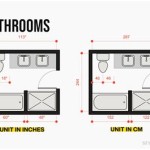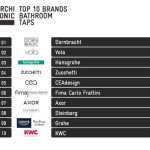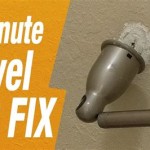How To Use Bleach to Clean a Bathroom Floor
Bathroom floors are constantly exposed to moisture, soap scum, and bodily fluids, making them a breeding ground for bacteria and mildew. Bleach offers a potent solution for disinfecting and deep cleaning, but its caustic nature necessitates careful handling and application. This guide outlines the proper procedures for effectively and safely using bleach to clean bathroom floors.
Essential Safety Precautions
Bleach is a powerful chemical and must be handled with caution. Following safety precautions is paramount to prevent accidents and health issues. * Always wear protective gear, including rubber gloves, eye protection, and old clothes. * Ensure adequate ventilation by opening windows and doors. * Never mix bleach with other cleaning agents, especially ammonia, as this can create toxic fumes. * Keep bleach out of reach of children and pets. * In case of skin contact, rinse immediately with plenty of water. If bleach splashes into the eyes, flush thoroughly with water for at least 15 minutes and seek medical attention.
Preparing the Bathroom for Cleaning
Prior to using bleach, proper preparation is crucial for achieving optimal cleaning results and preventing damage to bathroom fixtures: * Remove all loose items from the floor, such as rugs, bath mats, and trash cans. * Sweep or vacuum the floor to remove loose debris, hair, and dust. This step prevents the bleach solution from becoming overly dirty and ensures better contact with the floor surface. * Rinse the floor with clean water to further remove any residual dirt and prepare the surface for the bleach solution.
Creating the Bleach Cleaning Solution
The correct bleach dilution is crucial for effective cleaning without damaging the floor. Too concentrated a solution can damage certain flooring materials, while too weak a solution may not effectively disinfect. * Use a clean bucket and add cold water. Hot water can deactivate the bleaching agent. * Add the appropriate amount of bleach. A general guideline is to use ½ cup of bleach per gallon of water. Always refer to the manufacturer's instructions on the bleach bottle for specific dilution recommendations. * Avoid using metal containers as bleach can react with certain metals. Use plastic buckets or containers. * Never store unused bleach solution. Always discard the leftover solution after cleaning.
Applying the Bleach Solution
Applying the bleach solution methodically ensures even cleaning and prevents damage to the floor and surrounding fixtures. Careful application is essential for maximizing effectiveness and preventing accidents. * Starting from the furthest corner of the bathroom, apply the bleach solution to the floor using a mop, sponge, or cloth. * Ensure the entire floor surface is covered with the solution, paying particular attention to grout lines and areas prone to mildew growth. * Avoid splashing the solution onto walls, cabinets, or other bathroom fixtures. If splashing occurs, rinse immediately with clean water. * Allow the bleach solution to dwell on the floor for 5-10 minutes to effectively disinfect and remove stains. Do not allow the solution to dry completely.
Rinsing and Drying the Floor
Thoroughly rinsing the floor after applying the bleach solution is critical to remove any residual bleach and prevent damage to the flooring material. Proper drying techniques further enhance the cleaning process and prevent the growth of mildew. * Rinse the floor thoroughly with clean water, ensuring all traces of the bleach solution are removed. Use a mop and clean water, changing the water frequently. * Dry the floor using a clean mop or towels. Alternatively, allow the floor to air dry with adequate ventilation. * For grout lines, use a small brush or toothbrush to scrub away any remaining dirt or grime. * Ensure the bathroom is well-ventilated during and after the cleaning process to dissipate any remaining bleach fumes.
Cleaning Specific Floor Types
Different bathroom floor materials require specific cleaning considerations to prevent damage. Consulting the manufacturer's recommendations for specific flooring types is crucial. * Ceramic and Porcelain Tile: Generally tolerate bleach solutions well, but avoid prolonged contact with grout. * Vinyl Flooring: Can be cleaned with diluted bleach solutions, but excessive bleach concentration or prolonged exposure can damage the surface. * Natural Stone: Avoid using bleach on marble, granite, or other natural stone floors, as it can cause etching and discoloration. Consult manufacturer recommendations for appropriate cleaning solutions. * Linoleum: Diluted bleach solutions can be used, but test a small inconspicuous area first to ensure compatibility. Rinse thoroughly after cleaning.
Dealing with Stubborn Stains and Mildew
For particularly stubborn stains or mildew, more intensive cleaning methods may be necessary. Targeted application and understanding the specific stain type is key. * Apply a paste of baking soda and water to stubborn stains and let it sit for a few minutes before scrubbing with a brush. * For mildew, apply the bleach solution directly to the affected area and allow it to dwell for a longer period (up to 15 minutes), followed by thorough rinsing. * Consider using a specialized mildew remover for particularly resistant mildew growth. Follow the product instructions carefully. * Repeat the cleaning process as needed until the stains or mildew are completely removed.

10 Things To You Need Clean With Bleach In The Bathroom Pinning Mama

How To Clean With Bleach In A Bathroom Family Handyman

10 Things To You Need Clean With Bleach In The Bathroom Pinning Mama

7 Steps To Clean A Bathroom Floor With Bleach

How To Clean Bathroom Floors Easiest Step By Guide

How To Clean Floor Tile Grout In The Bathroom Clorox

How To Mop Floors With Bleach Clorox

5 Ways To Use Hygiene Bleach In Your Home Cleanipedia Za

How To Clean A Bathroom Using Clorox Bleach Remodelaholic

3 Ways To Clean A Toilet Or Bidet Using Bleach Wikihow
Related Posts







